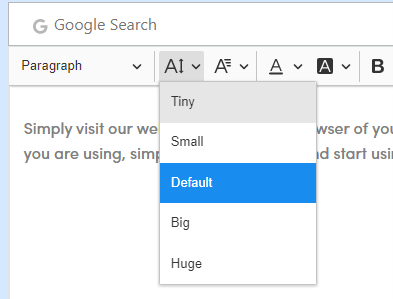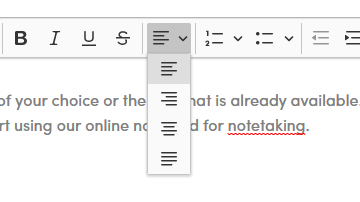Think of them as your customers—even when they’re heading out the door. That’s the ideal approach when a customer lapses. Churn is built into every business model, but just because churn is expected doesn’t mean it has to be accepted.
Today’s customer-centered economy means every customer should feel your product is built around their needs. After investing time and effort into helping your customer through the onboarding and adoption phase, it can be discouraging to see them leave.
You don’t have to give up on your customers, though. There are several strategies to win back lost customers that can rekindle your relationship and retain the investment you made in their success.
Why Did They Churn?
Every cancellation is an opportunity to learn more about how customers experience your business and how you can improve your customer success efforts. Viewed this way, customer churn can provide valuable insight for customer success teams.
Many factors can contribute to churn, but generally, customer cancellations are driven by the following motivations:
- Your service has not provided sufficient value.
- Your customer needs to reduce costs.
- Your solution is no longer needed.
- Your service wasn’t fully adopted.
- There was poor visibility into the value your product provided.
- Your customer changed key personnel.
- Cheaper or trendier alternatives become available.
Many of these motivations can be matters of perception. If your customers say your service isn’t returning value, for instance, the real problem may lie in the way you educate and engage with your customer. The good news is that improved communication and targeted campaigns are the best weapons at your disposal when trying to win back a lapsed customer.
The 5 Best Strategies to Win Back Lost Customers
To win back lost customers, you need to begin by researching what went wrong. If you use a customer success platform, then you can retroactively chart their engagement with your product over time. Such a platform records key customer data such as the product features they accessed, how many individuals used the service regularly compared to how many licenses were purchased, and when overall usage declined.
Armed with this data, you can begin the win-back process. The best strategies include:
- Ask to talk
- Acknowledge the problem
- Incentivize return
- Announce improvements
- Select your win-back targets
In all instances, your communication should be personalized and informed by real customer success data.
Ask to Talk
Begin your win-back campaign by asking your customer if they are willing to discuss their experience with your product. Obviously, the customer might reject your offer, but anyone who agrees to talk may be persuaded to come back.
So, rather than end your relationship with a generic auto-generated survey, see if you can discuss a specific aspect of your service. For example, your customer success platform may tell you that fewer than half the individuals on an account regularly accessed your product. That might lead you to ask, “Would you like to discuss any difficulties you had in getting your team members to adopt our service?”.
It’s nearly impossible to win back a lapsed customer if you no longer have their attention, so starting a conversation is the first step in rekindling your relationship.
Acknowledge the Problem
In order to win back a customer, you have to take responsibility for their unhappiness and provide a solution. Once you know why the customer churned, you can build a win-back campaign around the idea that you have heard your customer’s complaints and addressed them. Such a strategy might include promises of more thorough onboarding, changes to the user interface, regular on-site visits and calls, or changes to the price structure.
The customer-centered economy demands we build our products around our customers. Acknowledging there was a problem could give you a second chance to demonstrate your desire to mold your business to your customer’s needs.
Incentivize Return
A great way to revive a business relationship is to offer a new deal. Personalized messaging that addresses the interests and motivations of your lapsed customer can entice them to reconsider. You could offer discounted subscriptions, VIP support, free webinars or training sessions, and access to premium features as a way of luring customers back.
It is common for online retailers, for instance, to offer customers direct discounts on items related to previous purchases as a way of attracting them back. The goal here is to demonstrate increased value.
Announce Improvements
Using social media, blogs, video, and media opportunities, you can open a conversation regarding ways your business is improving. If your customer success metrics are telling you that customers perceive a delay in getting online support, for example, you can post about your new escalation techniques. Open up a broader conversation around what kinds of support are most effective, how technology can improve customer service, and how customer expectations have changed the nature of your business.
If you can position yourself as a leader in your industry, you may be able to rekindle a lapsed customer’s interest—especially if they see you’ve addressed their specific pain points.
Select Your Win-back Targets
Frankly, not every lapsed customer is worth pursuing. There’s little point in expending resources on a lapsed customer if your research tells you they’re likely to churn again or provide only limited revenue.
A customer success platform is key in determining the potential value of a churned customer. If your data shows the customer never progressed beyond a 20% license utilization rate, that they had low feature adoption, or regularly complained about your service, then they are unlikely to return. If, however, your data indicates high usage and feature adoption but a specific disruption to service use—perhaps a key manager left the company or a new budget was enforced—then you are more likely to win back the customer.
Employing Strategies to Win Back Lost Customers
The loss of a single customer is not going to break your business, but every instance of churn is a signal that your customer success model can be improved and an opportunity to find out exactly how.
The best strategies for winning back a lapsed customer stem from the same practices that allow your company to nurture and grow a successful customer relationship: gathering and acting on detailed customer data, actively tracking a customer through their journey, and personalizing customer engagement. If you acknowledge your role in a customer’s decision to cancel and demonstrate your willingness to shape your service to meet their needs, then you stand a reasonable chance of winning back their business and deepening your relationship.
Culled from Business2Community



.webp)
.webp)









